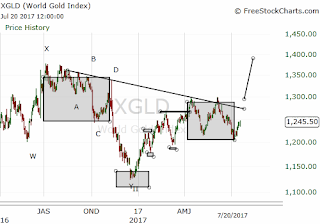2017 has been a very eventful year. Through September, SP500 has rallied more than 14% with dividends, even with many uncertainties like geo-politics, environmental upheavals, and rising interest rates. In fact, SP500 has defied gravity, as if there is nothing like gravity of resistance, bemusing many market watchers who have been expecting a pause for quite some time now. Hence, it has been a difficult period for investors as they have to absorb a lot of headline risk and be brave in their investments.
During these testing times, both of our proprietary strategies have performed very well. Since the very beginning, our goal is not just to beat SP500 but to generate value for investors in following 4 ways:
During these testing times, both of our proprietary strategies have performed very well. Since the very beginning, our goal is not just to beat SP500 but to generate value for investors in following 4 ways:
- Consistent returns comparable to major stock market indices
- Uncorrelated performance - Deliver Alpha under any market condition
- Differentiate by deploying techniques not used by mainstream investment gurus
- Provide a unique perspective to markets.
Although we plan to review 2017 performance in greater detail over next few weeks, let's quickly review the circumstances that have made 2017 unique.
Market Recap
2017 started with an overbought market, which continued to rally into March followed by a 1.5 month decline. At the time, many reasons were given for this decline including overbought market, high valuations, sentiment, potential for unfulfilled presidential promises and geo-political turmoil. However, market resumed its rally with Q2 earnings in April.
Market rally continued in May through early June. At the same time, we saw excessive optimism from famous investors calling tech stocks extremely cheap. As Fed raised rates in June market took a brief breather. This pause was accompanied by calls of '3 hops and a tumble' on Fed rates' influence on the markets. But with earning in July, market resumed it's ascent.
Everyone should ask themselves if their portfolio is positioned to absorb increased volatility because it will come eventually. And not only absorb volatility but take advantage from it.
In order to properly and profitably navigate through markets where extreme gyrations and news driven moves are the norm, one needs to maintain composure. Our strategies don't depend on market news, rather take into account underlying market tones to make investment decisions. This reduces transaction cost, dampens volatility, moves taxes to long-term bucket and generate consistent results for long-term benefits.
Portfolio Strategies
We currently have two live strategies, and are working on 3 more strategies in Beta phase. Goal for both of these strategies is to generate absolute, uncorrelated returns:
- Conservative (EPSB): Suitable for retirement accounts and risk-averse investors
- Aggressive (AEPSB): Suitable for risk taking investors, with longer-term invest goals
Note: Following strategy performance numbers do not include fees.
Conservative Strategy: 13.5% vs 14.2% for SP500 (w/ dividends)
Through Q3 2017, Conservative strategy performed similar to SP500. Keep in mind that SP500 has had a very good year so far, with it being up ~14%. But the better part is that since inception in Jan 2016, R-sq correlation coefficient is 0.07 with respect to SP500.
.
Aggressive Strategy: 33.7% vs 14.2% for SP500 (with dividends)
Aggressive strategy has performed very well in 2017. And the R-sq correlation coefficient is 0.01. In other words, our performance is not dependent on how the stock market performs.
Conclusion
The best aspect of these strategies is that they enables the investor to concentrate on the work that is more important in life than losing sleep over investments through daily news because we do the research and invest using proprietary algorithms and valuation models.
These strategies are open for investment. Please feel free to contact via subscription.ust@gmail.com for details. These strategies are being implemented via managed account setup through a Registered Investment Adviser. As a result, you keep control over your assets.
Please contact us for details. You can also sign-up for free email updates below:

































